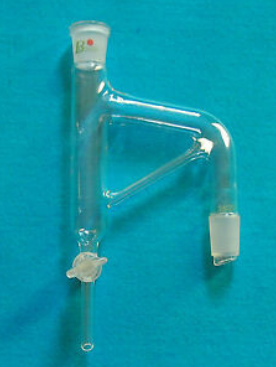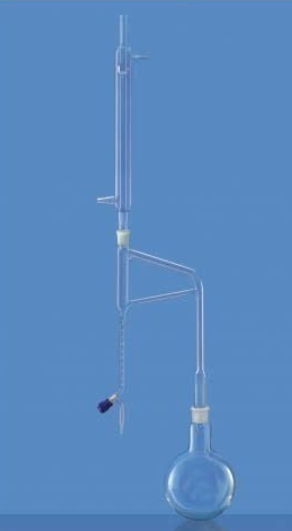Refinery
Hazard to Others
  
Posts: 371
Registered: 17-2-2014
Member Is Offline
Mood: Still
|
|
Steam distillation tubing size?
Does the size matter when choosing glass tube for steam distillation? I would think that very small tube would cause pressure and velocity issues that
causes the liquid to shoot up in the flask. I have available 3.5mm ID and 6mm ID glass tubing, I was preferring the latter.
|
|
|
Tsjerk
International Hazard
    
Posts: 3032
Registered: 20-4-2005
Location: Netherlands
Member Is Offline
Mood: Mood
|
|
Steam distillation is the same as normal distillation, the only difference is the water in the pot. 3.5mm could be fine if your setup is really small.
|
|
|
CouchHatter
Hazard to Others
  
Posts: 152
Registered: 28-10-2017
Location: Oklahoma
Member Is Offline
Mood: 76 elements taken!
|
|
Consistent rate of steam generation matters more. I have used 5/16"ID to great success, but if the steam generator is cooled before the pot, the
tubing lead into the pot will build pressure slowly until one great big burst of steam comes over and belches into the receiver. In that instance I
think the volume of small ID tubing would still be enough to make an appreciable splash but I haven't ever used small ID.
|
|
|
Tsjerk
International Hazard
    
Posts: 3032
Registered: 20-4-2005
Location: Netherlands
Member Is Offline
Mood: Mood
|
|
Steam distillation can be done without an external steam generator. Just put water in the pot, if you need more water than it can fit you either cool
down and refill or use a claisen adapter with an addition funnel.
|
|
|
Eddie Current
Hazard to Self
 
Posts: 78
Registered: 25-7-2018
Member Is Offline
|
|
A clevenger apparatus (left) is a handy piece of equipment for steam distillations.
 
|
|
|
monolithic
Hazard to Others
  
Posts: 436
Registered: 5-3-2018
Member Is Offline
Mood: No Mood
|
|
Quote: Originally posted by CouchHatter  | | Consistent rate of steam generation matters more. I have used 5/16"ID to great success, but if the steam generator is cooled before the pot, the
tubing lead into the pot will build pressure slowly until one great big burst of steam comes over and belches into the receiver. In that instance I
think the volume of small ID tubing would still be enough to make an appreciable splash but I haven't ever used small ID. |
Also an appropriate rate of steam generation. I've played around with an external steam generator (pressure cooker on a gas stove) and it's
surprisingly easy to outrun the capabilities of a 300 mm Liebig condenser.
|
|
|
Refinery
Hazard to Others
  
Posts: 371
Registered: 17-2-2014
Member Is Offline
Mood: Still
|
|
According to "laboratory methods of organic chemistry" a steam distillation with flask of water is sufficient for more volatile substances, but less
volatile should be helped with external steam, and low volatility stuff can be distilled with superheated steam.
I was planning on putting just another flask with glass tubes and silicon stoppers and tubing into a CaCl2 bath to feed steam at constant rate to a
flask filled with water and a substance to be distilled, and heat it to boiling.
I think I could try the clevenger because I can get one cheap. Although, it seems that many substances are actually heavier than water, and in this
instance a dean-stark trap should work better.
EDIT: Clevenger seems to work both ways, so that it is.
[Edited on 10-7-2020 by Refinery]
|
|
|
Mateo_swe
National Hazard
   
Posts: 541
Registered: 24-8-2019
Location: Within EU
Member Is Offline
|
|
A Clevinger apparatus works for both heavier than water and lighter than water distillates but is little more complicated to work with compared with a
dean stark.
However not all clevinger is designed the same and can be used for both purposes.
They need to have a piece of glass tube below where the thin pipe attaches to the main tube close to the "knob".
If one is short of cash i would choose the clevinger as it can be used for both situations.
Chemplayer has a video explaining the function and how to operate it.
|
|
|